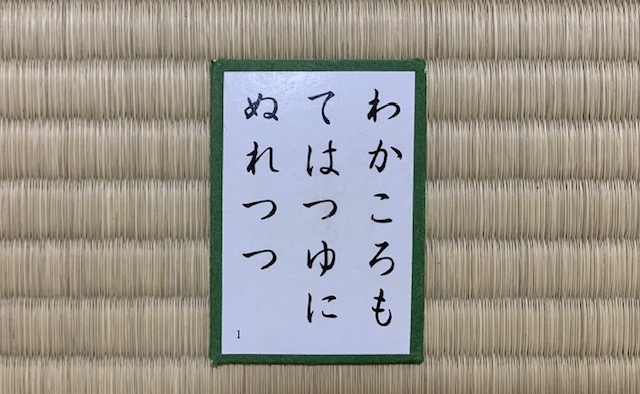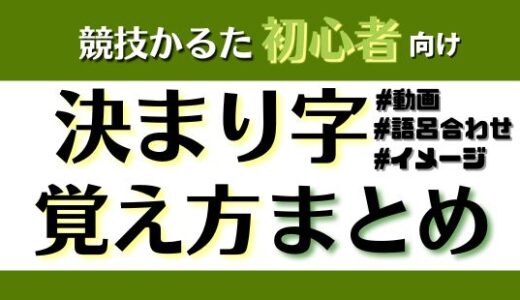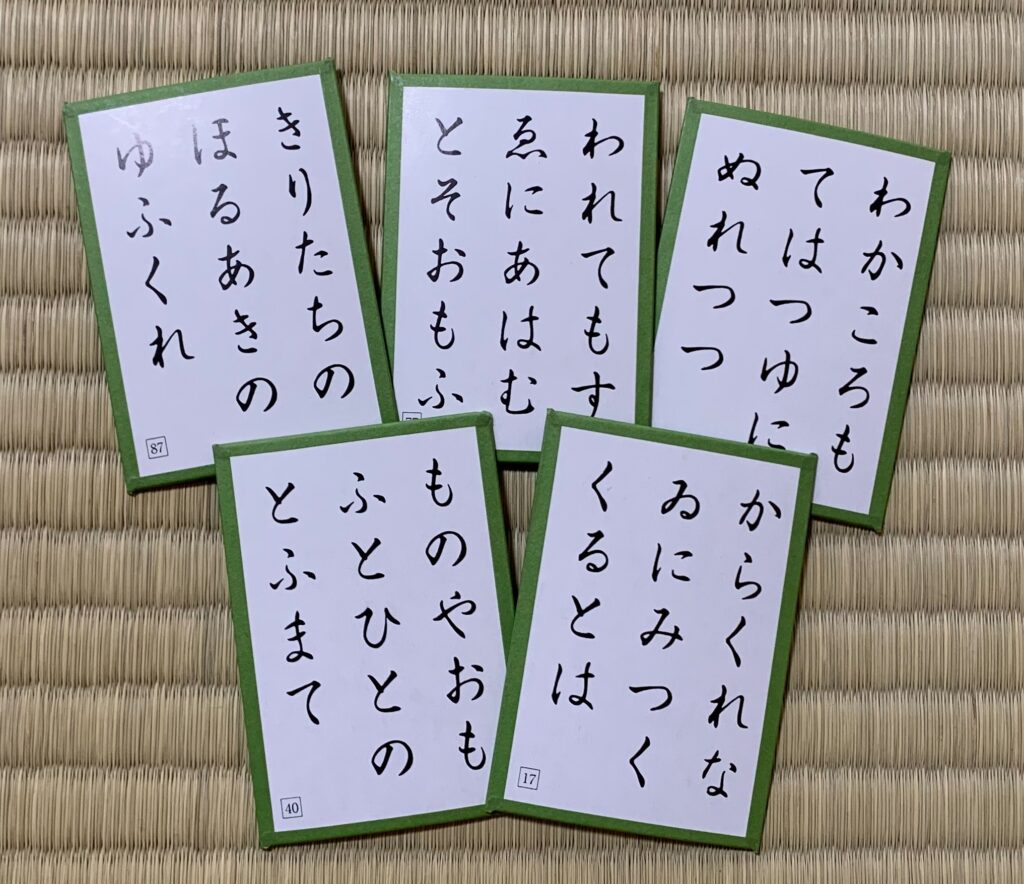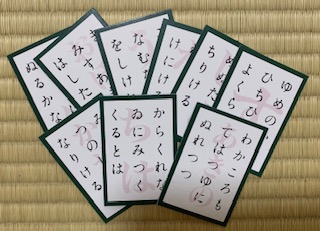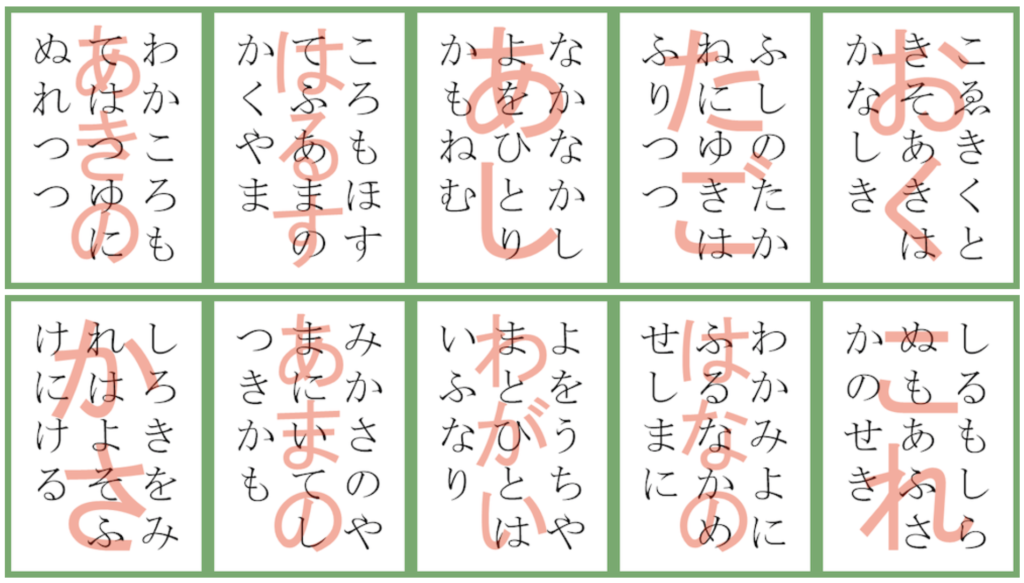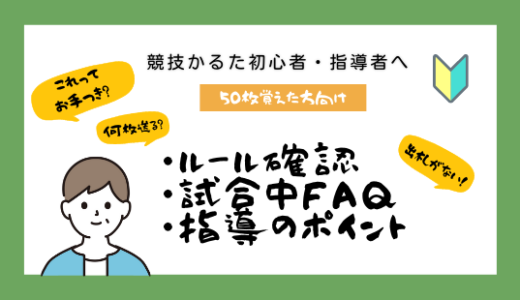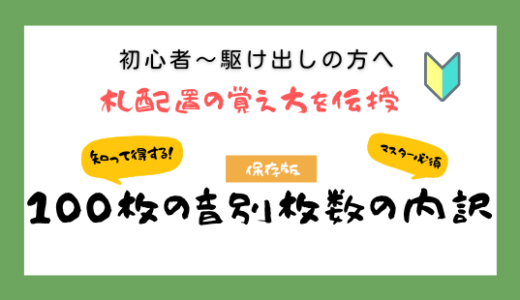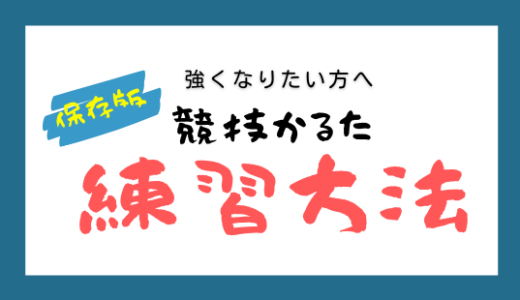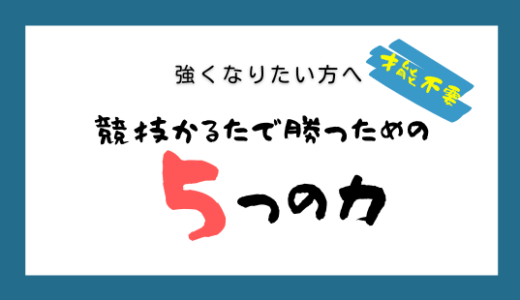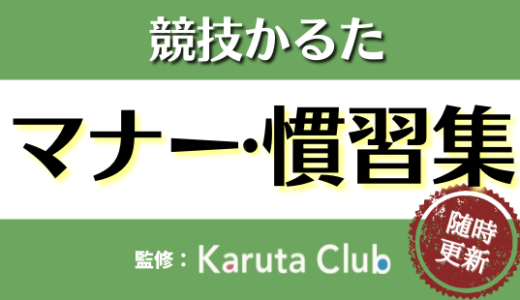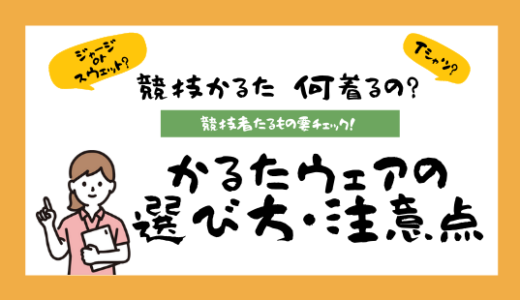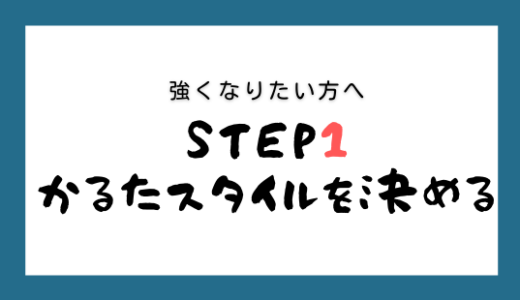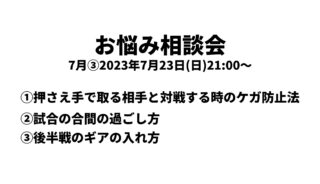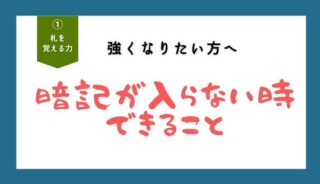Hi! I’m the president of Karuta Club, Masayoshi Kawase.
You may be asking yourself “I’d like to play Competitive Karuta, but how can I do it?” If so, this article will explain everything you need to start playing.
In Competitive Karuta, once you learn the basic concepts and rules, you will have the tools that you need to master the game.
That’s where this article comes in. We are going to go over everything you need to get a solid grasp of these basics. Everything you need to know to start playing Karuta is right here!
Towards the end, we’ll also summarize what you need to do to level up your game and receive an official rank (“sho-dan” is the first rank you can earn).
Before we begin: remember, you can start playing Competitive Karuta at any point during the 5 Steps–you don’t need to wait until you’ve studied every step! We encourage you to dive in any time and start having fun with the game!

I can’t wait to play Karuta! Let’s make it fun!
How to get started with Competitive Karuta:
- Become familiarized with the rules
- Learn basic strategies for winning
- Finally, learn what you need to do to become ranked (Sho-dan level)
Start playing Competitive Karuta right now
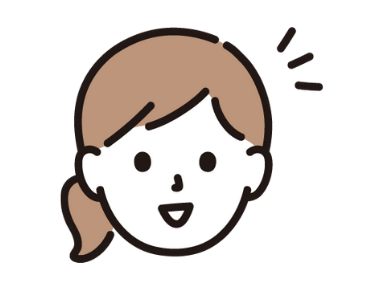
I want to start playing Competitive Karuta right away!
To help beginners like Ai, we’ve made a video that shows you how to start playing immediately.
Please watch the video first, and then try playing a match! If you find yourself uncertain about what to at any point, please reference the “5 steps” to holding a Karuta match that we are going to cover next.
(Note: this video is a “quick start” tutorial-style video, so it does not contain all of the rules that would be in force during an official Karuta match.)
Competitive Karuta in “5 Steps” – Mastering how to play
In the beginning, the rules for Competitive Karuta seem very complex.
Even if all the rules were clearly explained, there are so many things to memorize at once. It would probably be exasperating.
In this article, we will start by teaching only the basic rules you need to start playing a match. Over the course of the 5-steps, we’ll introduce more rules, little by little. By the end, you will have mastered how to play!
- Know what kind of competition Competitive Karuta is
- Know the “kimari-ji”
- Play an actual match (using basic rules)
- Swiping cards (rules on “Taking” cards)
- Memorize card positions (memorization rules)
In addition to these 5 steps, we’ll also cover things that aren’t “rules” per se, but are very helpful to know.
Once you’ve completed these steps, you’ll know not only the basic rules and how to play, but what you will need to advance beyond “beginner” to more advanced levels.
Then, with enough practice, you’ll be in a good position to earn a Dan-ranking.
❶ Know what kind of competition Competitive Karuta is
“Competitive Karuta” is a two-player, competitive mind sport played using cards containing poems from the Ogura Hyakunin-isshu (Ogura’s Hundred Poets) anthology, which can be enjoyed by people of all ages.
Players compete by listening to a designated person, called the “Reader,” recite the poems from the Hyakunin-isshu, and touching the card that corresponds to the poem being read faster than their opponent.

When you play Iroha-Garuta, if “If a dog takes a walk, it will find a stick” is read,
you take the card with the “I” (from “If”) on it, right?

Competitive Karuta really sounds a lot like Iroha-Garuta!
These are both true! Competitive Karuta, at its core, uses the same basic principles as Iroha-Garuta and other forms of Karuta. However, to make it more interesting and give it more depth as a competitive sport, a standard set of rules have been established.
Before we start going over the finer points of the rules, I want to highlight the biggest feature that distinguishes Competitive Karuta from other Karuta games:
The beginning of the poem (the part you will hear first) is not what is written on the cards!
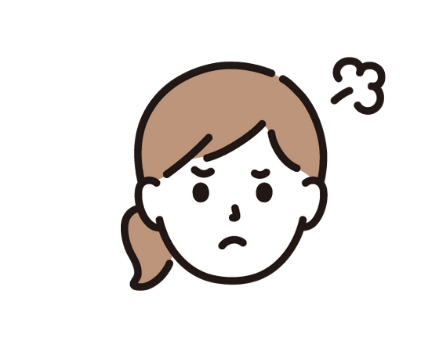
What? So when a poem is read, it won’t tell me which card to take!
That’s right!
However, the Hundred Poets anthology used for Competitive Karuta only contains 100 poems. Thus, if you memorize all of them, you will be able to know which card to take, even though the part on card isn’t what is being read.
Knowing all of the poems is necessary to know which cards to take, and being able to take cards the fastest determines the winner.
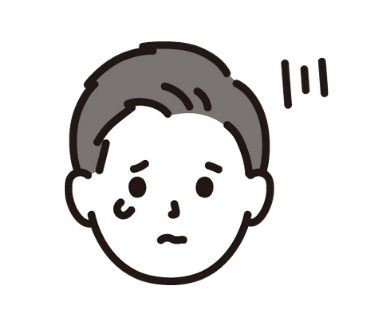
I have to memorize a 100 poems? All of them?
Memorizing the entirety of 100 poems is definitely intimidating.
But don’t worry! We can help!
In Competitive Karuta, there are two ways to go about getting ready to play: focus on learning poems as easily as possible or focus on the game without memorizing the poems.
Whichever method you choose, you’ll find that learning the parts of the poems called “Kimari-ji” will be critical.
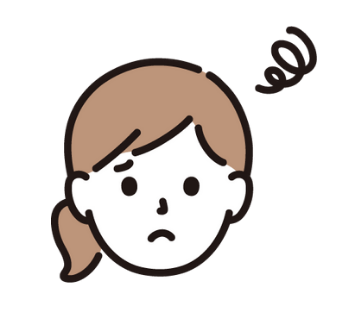
“Kimari-ji”? What’s that?
“Kimari-ji” are so important that we’ve dedicated one of the 5 steps to them! In fact, they’re the focus of the next section, so let’s read about them now..
❷ Know the “Kimari-ji”
Kimari-Ji: What are they?
Kimari-ji refer to the smallest number of characters (syllables) at the beginning of each Hyakunin-Isshu poem that you need to hear in order to take the correct card.
Some poems have short kimari-ji, where once you hear only the first syllable, you can say “It’s that card!” Others have longer kimari-ji, with the longest ones being 6 syllables.
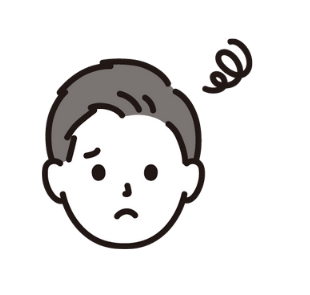
I’m not sure I get it..
I’ll give you an example: There are three poems that start with the sound “Chi”. So if you hear the first syllable, “Chi” you can narrow the correct card down to three possibilities, but don’t yet have enough information to know which one will be correct.
However, while all three start with “chi”, only one of those three poems starts with “chi-ha”. So the moment you hear “ha” after the “chi”, you know which card to take!

So when I hear “Chi-ha”, I can be confident that I can take the right card!
That’s right! We just covered “Chi-ha”, so here’s a quick look at all three poems that start with “Chi”. Notice that their Kimari-ji have been marked in red.
- “Chi-ha-ya-bu-ru ka-mi-yo mo ki-ka-zu ta-tsu-ta-ga-wa / ka-ra ku-re-na-i ni mi-zu-ku-ku-ru to wa”
- “Chi-gi-ri-o-ki-shi sa-se-mo ga tsu-yu o i-no-chi ni-te / a-wa-re ko-to-shi no a-ki mo i-nu me-ri”
- “Chi-gi-ri-ki na ka-ta-mi ni so-de o shi-bo-ri-tsu-tsu / su-e no ma-tsu-ya-ma na-mi ko-sa-ji to wa”
Cards you can take on 1 syllable are called “1 syllable cards / ichiji-kimari”, cards where you need to wait until you’ve heard two syllables are called “2-syllable cards / niji-kimari”, and so on.

So since the “Chihayaburu” card can be taken after we hear the second syllable, it’s a 2-syllable card?
Exactly! And for the same reasons, the “Chi-gi-ri-o-ki-shi” and “Chi-gi-ri-ki-na” cards are 4-syllable cards.
Memorizing the Kimari-ji is essential for being able to take cards as quickly as possible.
Memorizing the Kimari-ji / Start playing Karuta with Beginner Cards

So.. This means I have to memorize both the Kimari-ji and what’s written on the cards..
That’s right.
Once you are able to look at a torifuda, and know its corresponding kimari-ji, you will have what you need to play Competitive Karuta.

But I don’t know how I’ll manage to memorize all of that!
It’s true. Even though you only need to memorize certain fragments of the poems, it’s still a lot.
However, there is some good news. For people like Bo, who are just starting out, it’s possible to use special “beginner cards” that have the kimari-ji printed on the torifuda.

Awesome! So I can start playing before I’ve memorized them all!
Yes! It gives everyone a way to start playing real games before they’ve finished memorizing all of the kimari-ji.
However, if you’ve already committed to playing Competitive Karuta properly, relying too much on beginner cards may actually slow down your progress.
As of December 2022, it’s very rare to find any Karuta clubs or schools that hold matches using beginner cards, and the few that do insist that players learn the kimari-ji as soon as possible.
There are even clubs and schools where they won’t even let you join the practice session until you memorize all the kimari-ji.

So beginner cards are really just for getting a taste of the game..
That’s a good way to put it.
However, here at the Karuta Club, we feel it’s a tragedy that people might never experience the joy of playing Competitive Karuta simply because they didn’t memorize the Kimari-ji. For that reason, we recommend that new players should start playing with Beginner Cards with no fear.
If you find yourself really enjoying the game, perhaps even wishing you could enter a tournament, that’s a good indication that you should start making a real effort to learn the kimari-ji. Remember that it’s never too late to learn the kimari-ji!

Ok! For now, I am going to try playing with beginner cards..

After all, I want to become a Karuta Queen, so I will start with memorizing Kimari-ji now!!
We recommend memorizing the Kimari-ji to anyone who is having any of these thoughts:
- I’d like to join a Karuta club or organization
- I want to enter a tournament
- I want to improve my skill and obtain a ranking in Competitive Karuta
By “memorizing the kimari-ji”, we mean that when you see any of the 100 torifuda, you should be able to say what the distinguishing, beginning sounds are for it.
While learning the poems in their entirety is certainly one way to accomplish this, many people use shortcuts like mnemonic rhymes or visual cues on the cards to associate the correct kimari-ji with each torifuda.
We’ve created a separate article with a collection of various methods to memorize all one hundred kimari-ji. If you’d like more details and information on how to do it, please click the link below and check it out! (Only in Japanese)
We also feature mnemonic images for each of the cards in our main video. (Only in Japanese) We hope it will make things fun as you memorize each card.

Together, let’s try our best to memorize it all!
If you don’t have a set of Hyakunin-Isshu cards at home, now is the time to buy one.
Not having a deck of Hyakunin-Isshu card would only make memorization more difficult.
And if you have to buy a deck of cards anyway, we suggest the Ohishi Tengudo deck of “competition” Torifuda cards.
These are the only type of cards allowed to be used in official tournaments, so practicing with them is essential.
Non-competition cards are made using cheaper methods. Compared to competition cards, they’re flat and flimsy. Playing Competitive Karuta is an intense activity, and poorly made cards can become damaged easily. Additionally, cheap cards tend to stick to the floor or other cards and don’t respond properly to the kind of swiping that happens in competition.
However, if you already have a deck of Hyakunin-Isshu cards at home, you don’t need to buy a set of competition-quality cards quite yet.
You will want to get a set of “competition” cards eventually, but it’s no problem to wait until you need it.
By the way, the deck we mentioned is a Torifuda deck that only contains torifuda cards. They also make a yomifuda (“reading” cards) deck that contains the cards with the full poems for the reader.
However, since the there are several Apps that you can use to handle card reading, buying a deck of yomifuda is not really necessary.
We recommend playing with Beginner Cards if you’re having thoughts like:
- I’d like to try it out!
- I want to play with friends and family members
- I’m having some trouble memorizing the kimari-ji
For people in these situations, having a deck of beginner cards means you can start playing right away.
There are two ways to get a deck of beginner cards. A: buy one, B: download one for free.
Read on to figure out which method works best for you.
The Ohishi Tengudo company sells decks of Karuta Beginner Cards. We’re not aware of any other companies that make them, so this is likely your only choice.
Ohishi Tengudo is a historic manufacturer of playing cards, and officially recognized by the All Japan Karuta Association as the exclusive provider of Hyakunin-Isshu cards used in competitions.
Their beginner cards have the kimari-ji printed on the cards in a very light red color over the original print in black ink.
For people who want to start playing as soon as possible, Karuta Club offers a printable version of the Beginner Cards that can be downloaded for free.
Below is everything you need to download, print, and play!
Important noteYoung children should only do this with assistance from a parent or guardian

Yeah! Let’s play!
❸ Using the basic rules, play your first proper match
Once you’ve understood how the kimari-ji works, it’s time to play a real match!
Let’s go over all the steps you’ll need to play a Competitive Karuta match, from setup to finish.
To keep things simple for now, we’re going to go show you how to play as concisely as possible. The steps below represent the minimum of what is needed for a proper match.uko
1. Place all 100 cards face down and mix them. Each player receives 25 cards.
This is Competitive Karuta, so the other player will be your opponent.
Place all 100 cards face down and mix them, then each player receives 25 cards.
This leaves 50 cards that won’t be used in the game. Gather them together and put them aside.
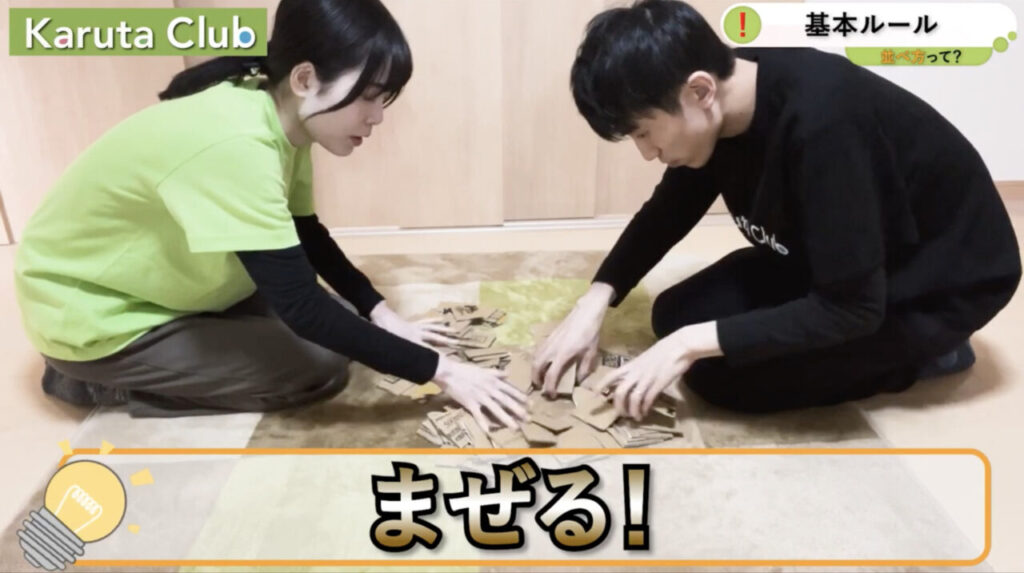
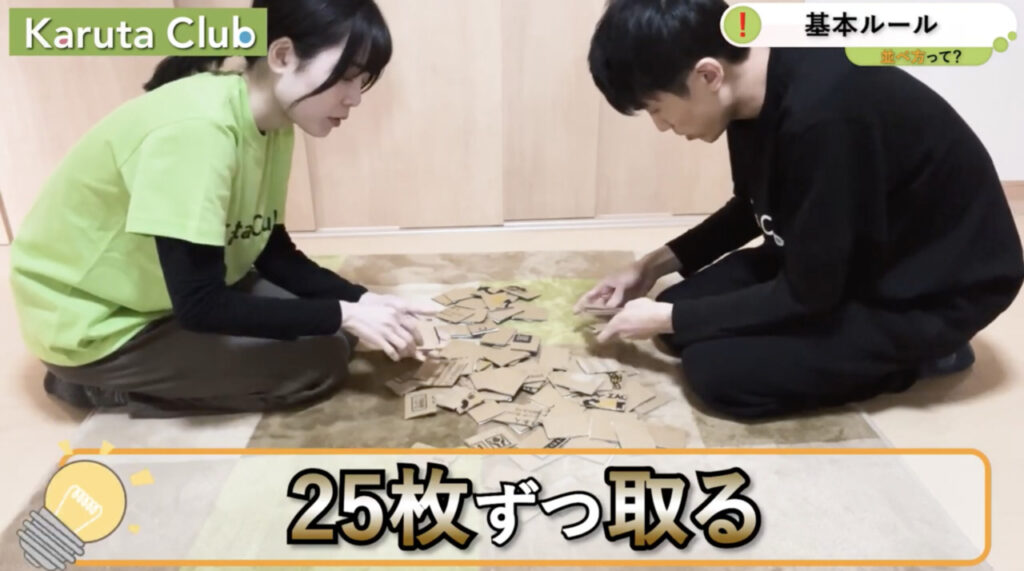
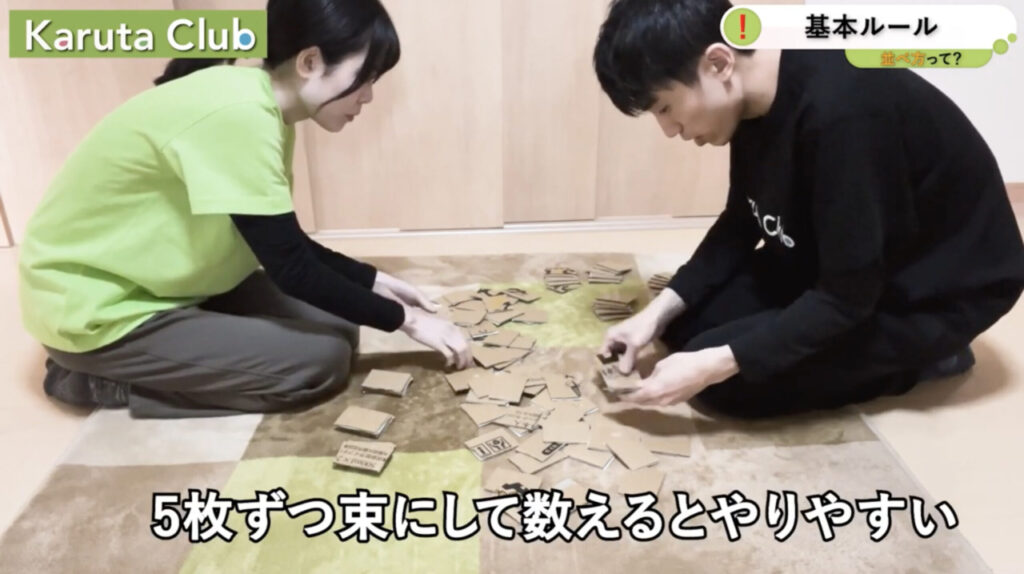
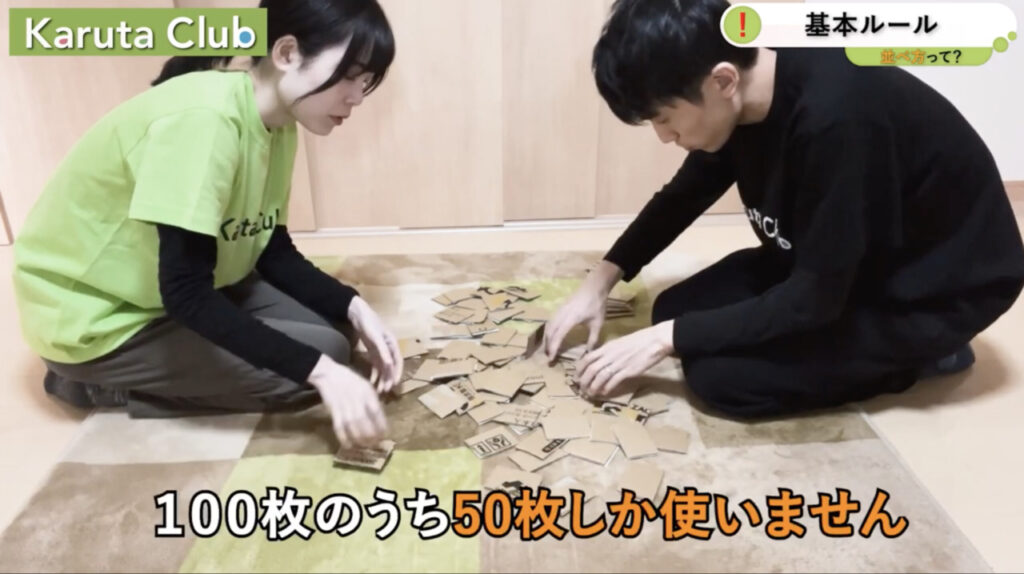
2. Each player arranges their 25 cards into three rows
Each player starts lining up their cards in front of them within their own territory. Your opponent’s territory can be considered “enemy territory”.
A player’s territory has enough space for three rows of cards. Cards should be lined up along these rows and face the owner of the territory.
Here are three rules about card placement that must be followed:
- The placing area (territory) is 87cm wide
- There should be a gap of about 3cm between your territory and your opponent’s territory (about 3 rows of tatami weave)
- There should be a 1cm space between the rows within player territories (about 1 row of tatami weave)
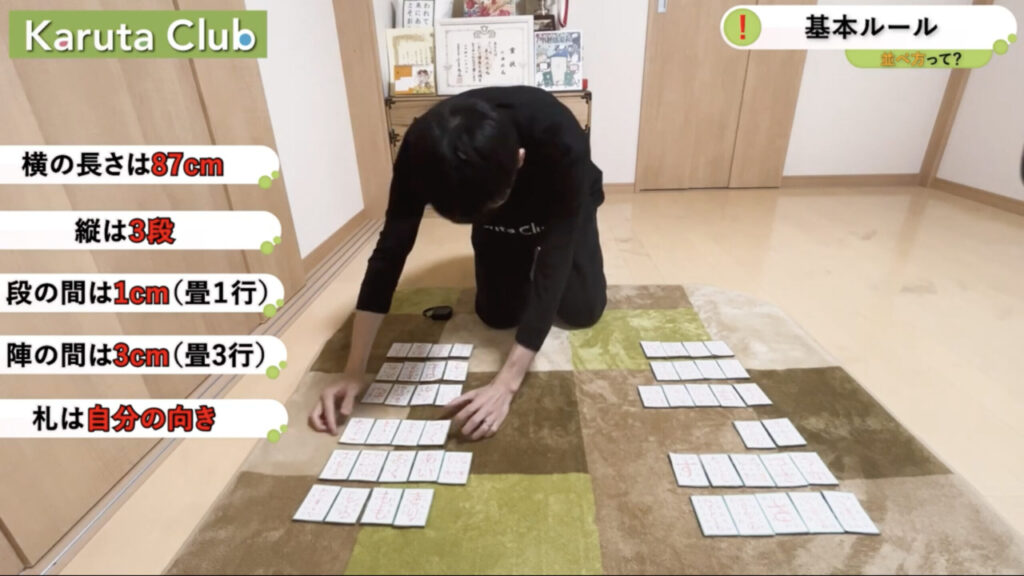
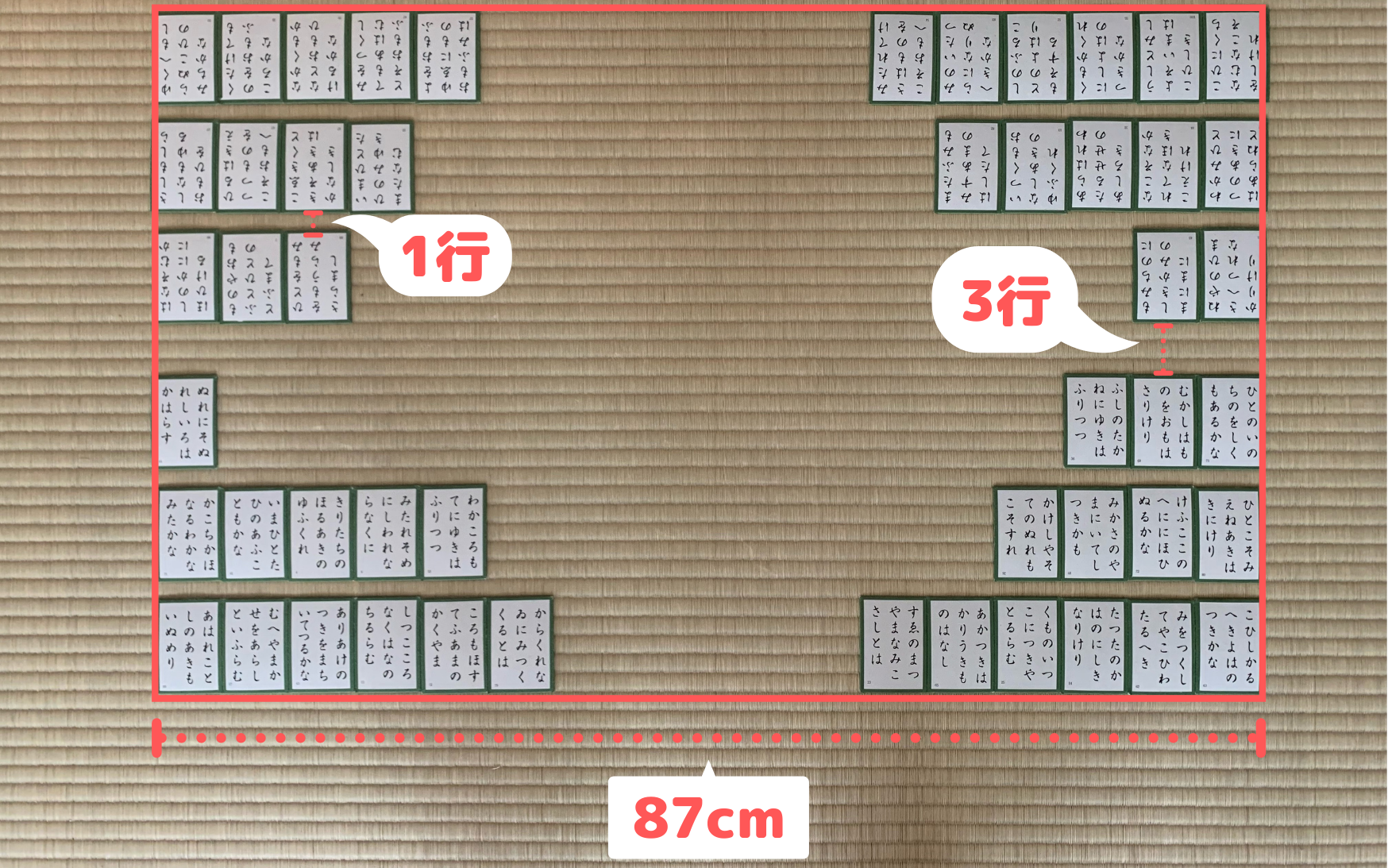

Why aren’t there any cards placed in the middle areas?
For placing cards, the three rules above are the only rules there are.
As long as you follow the rules above, you can place cards anywhere you like within your rows, including the middle.

So.. that means I can put cards in the middle, or I could leave gaps between cards..?
While you can place cards any way you like within the rules, most players place cards in groups to the left and right sides so they can “hit the cards” as we explain later. Therefore, for now we recommend you to follow this way.
The standard way to refer to card locations within a player’s territory is by row (top, middle, or bottom) and side (left or right). For example, the cards in your territory closest to you on your left are in your bottom-left row. The cards in your opponent’s territory on their right side in the middle are in their middle-right row. Cards in the topmost row of your territory on the left are in your top-left row.
3. Review rules for taking cards
In a Competitive Karuta game, the following rules about taking cards absolutely must be followed:
- You may only use one hand to take cards (most people use their dominant hand)
- You must keep your hand in contact with the mat, below your territory until the reader starts uttering the top-half of a poem
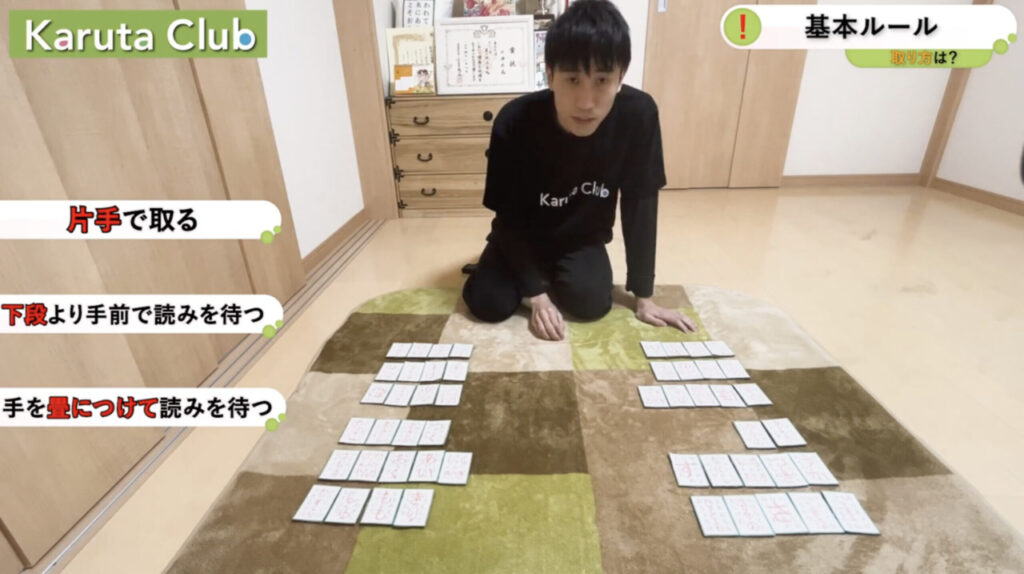
Hands stay below the bottom row.
Hands keep contact with Tatami mat until Kaminoku is called.
4. Start the match!
At this point, all the pre-match preparation is now complete. Without further ado, let’s begin!
You can ask someone to read the Hyakunin-Isshu poems for your match, or there are several free apps we recommend that you can use to recite the poems for you.
We’ve created this article with detailed instructions and dowload the link for our reciting app, so please check it out!

There is an app to recite poems? That’s
so convenient!
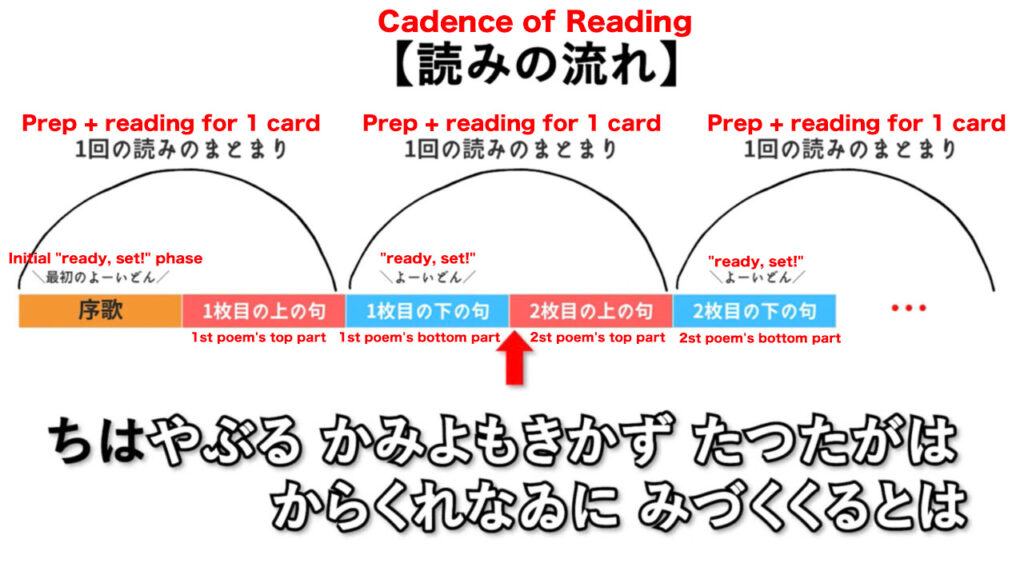
In Competitive Karuta, there is a particular way that the poems should be recited.
Specifically, poems are read bottom-half (of the previous poem), and then top-half (of the current poem). The time spent reciting the bottom half gives players time to prepare to take the card of the upcoming poem!
Even if we thoroughly explain this in the article, we think it’s a little hard to understand without being able to hear it, so we made a video. Please check it out! ((Only in Japanese)
If you’re using an app to the read the poems for Kyougi Karuta, please select “Competitive Mode” when you are setting it up for your match. Do this even if you are a beginner.
“Beginner Mode” is programmed to read poems top-half, then bottom-half. This is the same style as casual Karuta games, not suitable for Kyougi Karuta.
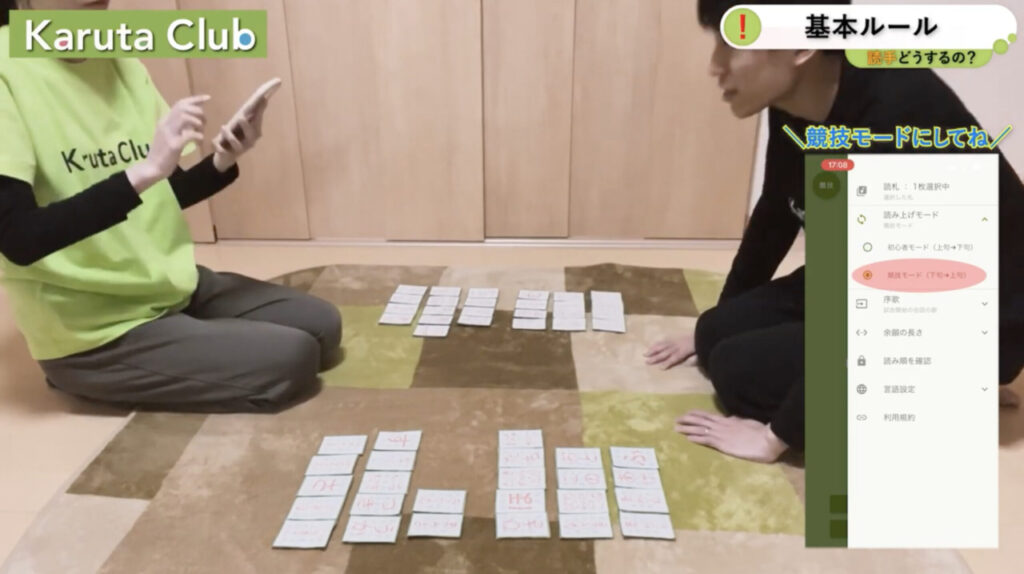
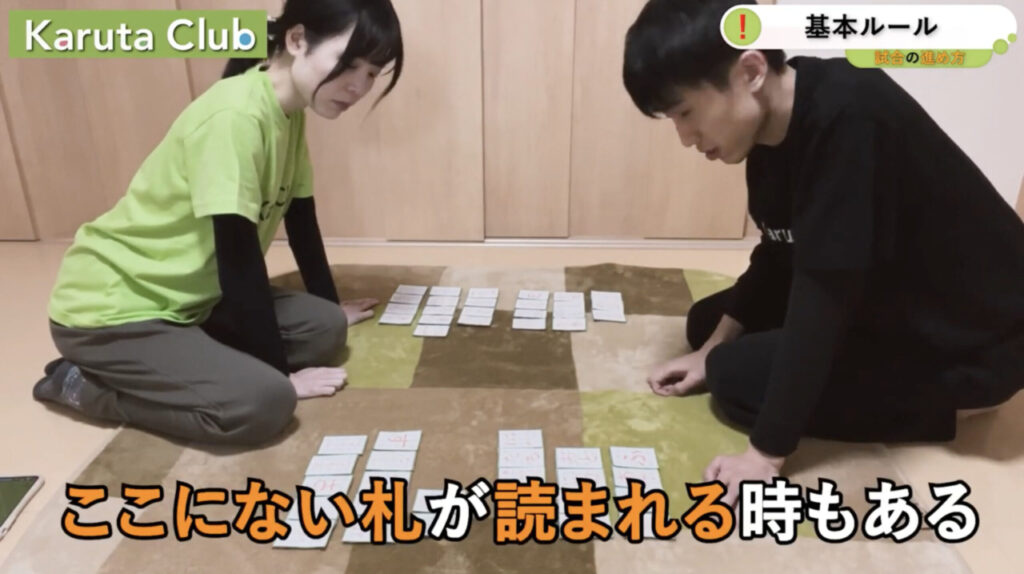
You might remember that we said we only use 50 cards. However, it’s still true that all 100 poems will be read.
It’s possible a card will be read that isn’t one of the 50 cards in play.
When this happens, it’s referred to as a Karafuda, Blank cards (“dead card” in the English translations of the manga and anime).
5. Taking cards
The first person to touch the card whose poem was just read takes the card. The card that corresponds to the currently read poem is called the “defuda” in Japanese.
Sometimes it’s hard to tell who touched a card first. Since there are quite a few rules about what to do in this situation, we’re going to cover in another article.
After a card is taken, the player who took it should place it face-down beside them. Generally, taken cards are placed on the side opposite of the player’s dominant hand. Players’ taken cards should be neatly stacked.
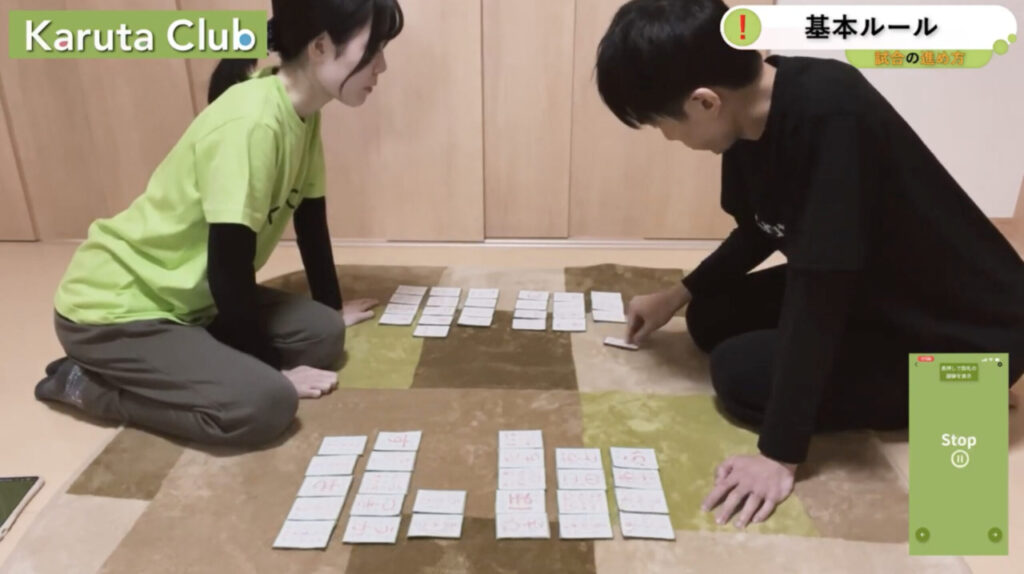
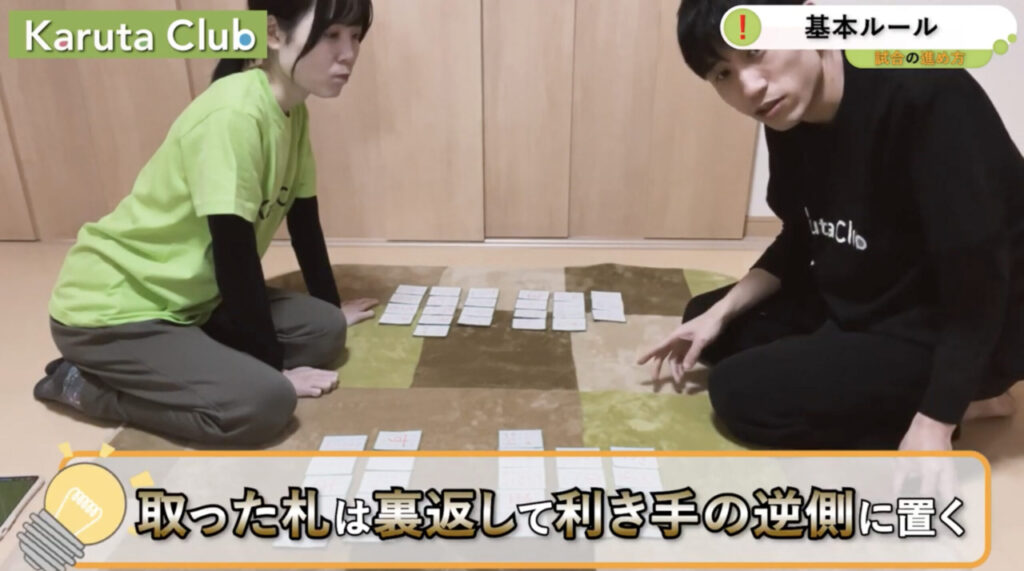
If a card was taken from the opponent’s territory, the player who took the card may now give their opponent a card from their own territory. This is called “sending” a card.
The player who received the card must then place it wherever they like within their own territory.
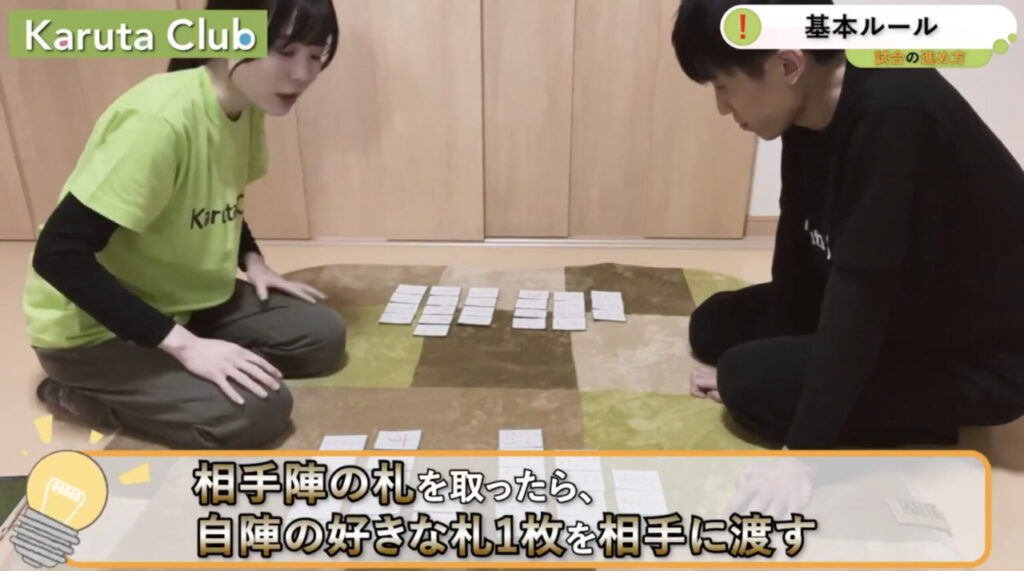


What’s the point of sending cards?
Because the objective of the game isn’t to take the most cards. The winner is the first player to have zero cards remaining in their territory.

So it’s like Uno or Old Maid!
Where you win when you have
no more cards!
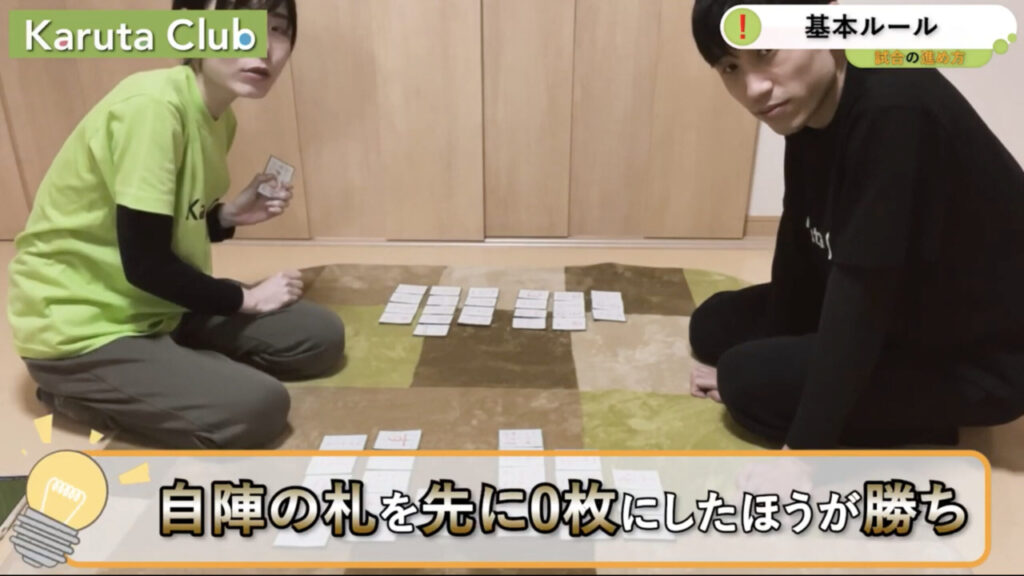
6. Touching the wrong cards (Otetsukis)
Touching the wrong card is a foul (called Otetsuki, in Japanese).
There are a lot of rules about Otetsuki, so we’re going to save the detailed stuff for another article. However, the result of an Otetsuki is always the same: a card gets sent.
If your opponent touches the wrong the card (Otetsuki), you will send them a card. The card sending works the same way as it does when you take a card from their territory.
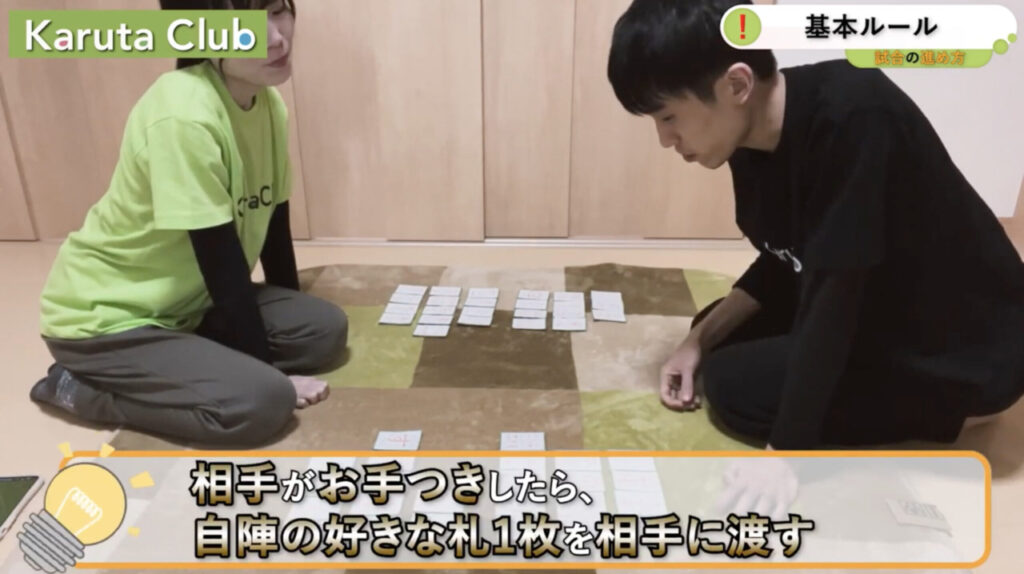
7. The first player to reduce their territory to zero cards wins!
Once either player has zero cards remaining in their territory, the match is over.
The winner is the player with zero cards in their territory (in the images below, it’s the player on the right).
Remember that the number of cards taken doesn’t determine the winner or loser, it’s whoever clears their territory first.

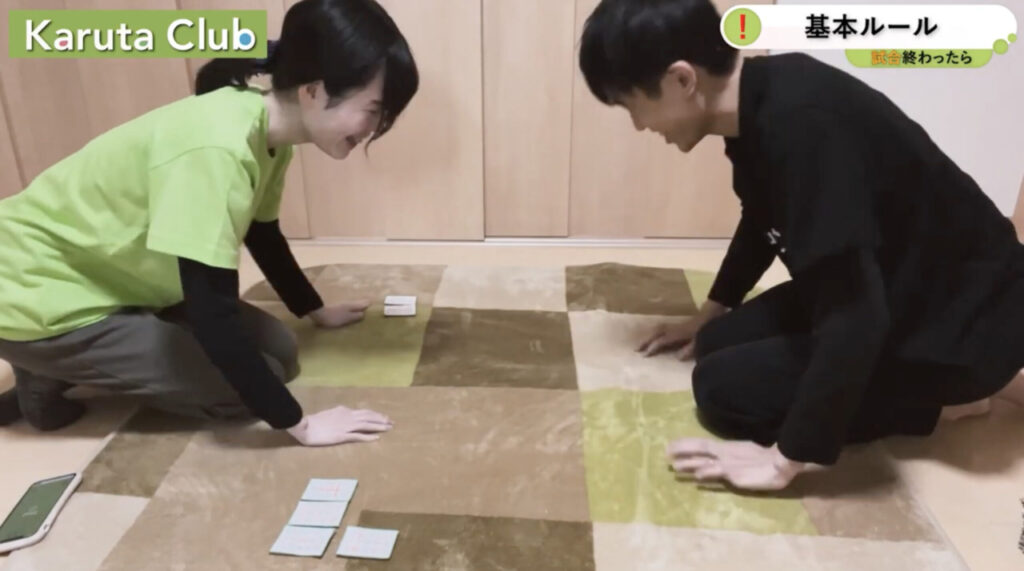

Our Karuta match was pretty fun!!

Let’s play again!
❹ Swiping cards (rules on “Taking” cards)
Once you’ve got a grasp on how to play, it’s time to start working on your swiping technique.

My..swiping..technique?
Actually, it’s probably faster to demonstrate this visually. Please have a look at this short video that demonstrates several different swipes. (Only in Japanese)

Whoa! That’s so fast!
“Rules on Taking” – Taking cards indirectly and knowing when and why to swipe

But.. Why would we have to swipe at the cards?
There are two reasons why you would want to swipe:
The first one is simply because it’s faster.

I guess that makes sense. You can put a lot of energy and speed into a swipe than a tap.
The other reason is because the rules don’t insist that you directly touch the correct card. Swipes can cause many cards to move. As long as your swipe causes the correct card to fully exit its territory, it’s your “take”. This is called “card pushing”.
In this video below (only in Japanese), the red card is the card for the currently read poem (the defuda). At no point do I come into direct contact with the red card. However, since it ends up fully outside of its territory, it’s my “take”.
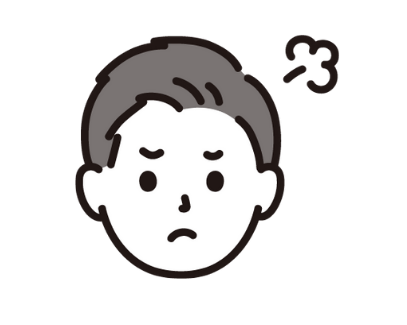
This seems important! Why didn’t you mention this rule before?
It’s true, I did skip this. I apologize for that!
I left it out because it’s not very relevant if you’re touching individual cards. It only comes into play when you start swiping.

But..if you swipe out the wrong card, isn’t that an Otetsuki?
That’s is a very good question.
Actually, as long as any cards you touch or swipe are in the same territory as the defuda (the correct card) for the currently read poem (defuda), it’s not an otetsuki.
There are two ways to commit an Otetsuki.
Touching a card in the opposite territory of the defuda (shown in red)
Touching any card when the currently read card isn’t in either players’ territory (karafuda)

This is getting complicated..
It can feel complicated in the beginning when you’re learning many things at once, but it’s not as bad as it looks. A little practice will help you get more comfortable with the rules!
Swiping is actually one of the most fun and thrilling aspects of playing Competitive Karuta, so we strongly encourage you to try to master it!
Swiping cards

Teach me how to improve my swiping!
First, it’s important to have the right “posture”.
By “posture”, we mean you need be in position and ready to swipe at the cards with everything you’ve got. If you think in terms of “Ready, set.. go!”, you want a posture that resembles the “set..” phrase.
It’s similar to how runners tense into a crouch or how swimmers prepare themselves to dive before the starting official signals “go!”.
When the reader finishes reciting the bottom half of a poem, players get into position to swipe. The moment the top half of next poem is read, they swipe for the correct card with their full energy.

How do I do this “posture” thing correctly?
There are various ways to go about it, but let’s start with a basic one.
Keeping your toes planted on the floor, assume a kneeling-sitting position. To increase stability, space your legs slightly apart (roughly shoulder-width).
Using your dominant hand, make a fist and place it just behind the line that marks the playing area.
Use your other hand to help support your body.
Please watch the videos for kamae postures. There is a Japanese version and an English voice-over version.
Now that you know how to get into position, you’re ready.
You can start by trying to copy how we swipe in the video below. (Only in Japanese)
You can practice swiping wherever you like, but we have some suggestions you might want to prioritize. First, work on your swipes to the opponent’s right-bottom row (go for their left-bottom row if you’re left-handed).
This is a good target to practice, because it’s the furthest place from your hand. That makes it toughest spot to take cards from. If you can learn how to get there quickly, it will be a great asset!

Ugh, it’s difficult! If you have any tips, I’m all ears!
Swiping properly is definitely a challenge at first! As you work on your technique, be mindful of the following things.
- Swipe with speed, not force. Be more like a whip than a hammer or a bat.
- Touch cards only briefly with your fingertips.
- Move in a straight line towards your targeted card.
So long as you keep these three pointers in mind as you work on your swipes, everything should fall into place.
All you need now is patience and practice. The more you work at it, the better you will get!
❺ Memorize card positions (memorization rules)
Now that you’re getting more capable at swiping cards, the next thing we need to focus on is memorizing the card positions.
Once a Competitive Karuta match starts, players don’t spend their time looking for cards. You can’t try to take a card unless you know where it is.
Since the players compete reaching to the recited card faster then the opponent, knowing where you need to move to take a card is the key. You should assume your opponent will memorize all the card positions, thus you must do the same.

But..remembering the positions of everything? Isn’t that impossible?
Memorization Rules: 15 minutes for memorization is given after placing cards.

Memorization time.. Did you mention it before?
Don’t worry! It’s something we haven’t explained yet.
It’s simple enough: after each player has laid out their 25 cards, they have 15 minutes to memorize the card positions.
In this time, players must memorize the positions of all of the 50 cards.
During the last 2 minutes of the memorization time, players are permitted to take practice swipe motions. You may practice swiping into either your or your opponent’s territory, but do not actually touch any cards during this time.
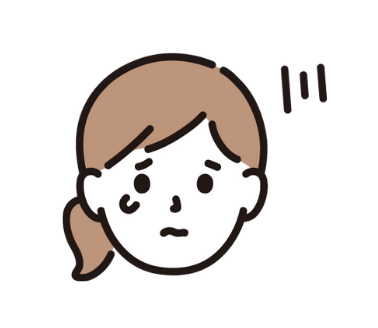
Even with a time for memorization, memorizing all the positions seems impossible.
It always seems that way at the start. However, it’s another thing that comes with practice.
Just keep at it. You’ll be amazed at what you can achieve.
Home Positions
Having said that, we can admit that memorizing 25 cards on each side (50 total) is a lot. Fortunately, there are some shortcuts to make it a little easier.

Shortcuts..?
Remember that you can place your 25 cards anywhere you want within your territory. Say you place the “chi-ha” card in your bottom-right row.
Now, take this a step further: What if you decide that whenever “chi-ha” card is in your territory, you will always place it in your bottom-right row? If you establish habits like this for all of the cards, it will greatly reduce how much you need to remember during the memorization time.
Having a set of predetermined positions for each card is called a “tei-ichi”. The majority of Karuta players develop their own “tei-ichi” layouts for their cards.

Of course! Naturally, people found ways to make it easier!

I want to figure out my own tei-ichi! Are there any tips on how to make an effective one?
There aren’t any rules or guidelines for making your tei-ichi.
As long as you can remember your tei-ichi positions, they can be whatever you like.
However, we feel like some people might have a hard time deciding how to devise their first tei-ichi, so we’ve made a video to show how we can make one together. If you’re not sure how to proceed, please check it out! (Only in Japanese)
Within the 100 cards, recognize sets of cards related by particular sounds
Here’s another important thing to keep in mind when memorizing card positions:
Within the 100 cards, some are said to be “friends” to one another.

Hyakunin-Isshu cards can have friends?
While memorizing the cards, you may notice that there are several cards whose kimari-ji start with the same sound. For example, there are multiple cards whose kimari-ji starts with “u” and others that start with “ha”.
We breakdown 100 cards into “the sound groupings”, using our above examples:
- “u” has two friends: “u-ka” and “u-ra“
- “ha” has four friends: “ha-na-sa“, “ha-na-no“, “ha-ru-su“, and “ha-ru-no“
This is the list of “how many cards in each beginning sound”

But..how is this friend stuff related to memorizing the cards?
Here’s why: if you memorize the sound groupings and which poems are in each group, you will be able to recall all the cards without even looking at them. Instead of memorizing each card as a unique item, you’ll simply be checking which “friends” are present from each group, and where they are.
Grouping things makes memorization more efficient. This is true both for memorizing the groups in the first place, as well as using this knowledge to memorize card positions.
We have written a separate article that covers this in more details, so please check it out! (This article is only in Japanese)
Congratulations!
You now know everything you need to get started playing Competitive Karuta matches!
While we didn’t cover every last rule of the game, if you can master the steps we’ve covered, you should have no problem playing Competitive Karuta and improving!

I’ll make sure to keep coming back to this article while I try to master the game!
Taking the next steps toward achieving a Dan-rank
Lastly, I will talk about what comes next: how to earn a Dan-rank.
Earning a Dan-rank is not impossible. If you make a genuine effort to put the steps you’ve learned from this article into practice, you will succeed.
Practice to improve your skills and strengthen your game
If you want to get better at Karuta, practice is absolutely necessary.
The skills we introduced in steps ❹ “swiping cards” and ❺ “memorizing card positions” can only be improved through repetition.
Fortunately, the best way to practice is simply to play Karuta matches and have fun while you do it. By playing games, you will exercise all the skills you have learned.
In a sport like baseball, it’s critical for players spend a lot of time practicing individual skills, like batting or throwing. Competitive Karuta requires less of drill exercise time, so you can spend most of your time in the actual game.
Of course, this doesn’t mean that there aren’t things you can work on outside of playing matches! If you’d like to learn about things you can practice on your own, we have an article (only in Japanese) with some suggestions.
If already practing a lot, and you’re serious about taking your performance to the highest level, you may want to check out the article (only in Japanese) by Mr. Kawase below.
Masayoshi Kawase is the current Meijin (champion) of Competitive Karuta. The title of Meijin is only awarded to the strongest Karuta player of each year. In this easy-to-follow article, he shares his top pro-tips on how to win matches.
Join a Karuta-kai
If you are aiming to get an official dan rank in Competitive Karuta, practing casually with family or friends who don’t have those same goals may not be enough.
Finding a group where you can get advice and play against people who are a stronger than you can be very beneficial.
Unless you’re in (or able to join) a Competitive Karuta team at your school, we recommend trying to find a Karuta club or organization. A club that plays Competitive Karuta will have something like “Karuta-kai” in its title.
Another important function of clubs is that they support your application into official tournaments, so please try to see if there are any clubs in your area.
Here is an article (only in Japanese) that summarizes the process in how to find and join a Karuta-kai.
It’s probably worth mentioning that many clubs require people to memorize all the kimari-ji (we covered this in step ❷) before allowing them to become members.
Of course, membership requirements vary from club to club, so we recommend confirming what you’ll need to do with any clubs you’re interested in.
Learning proper rules and etiquette, and enter a tournament
If you wish to earn a rank, you will need to be familiar with all of the official rules as well as the proper etiquette to follow during the match.
While proper etiquette isn’t codified into the rules, it’s necessary as you will receive warnings by the judges if you don’t follow it.
For that reason, please familiarize yourself with proper etiquette before entering a tournament.
We’ve collected all the detailed match rules as well as the protocols for proper etiquette into the article below (only in Japanese), so please be sure to read it over.
Summary
We wrote this article for all the people out there saying “I would love to try playing Competitive Karuta, but I don’t even know where to start..” We started out by introducing all of the basic rules and techniques you need to start playing.
Afterwards, we talked about ways to improve your game and develop your skills. Finally, we talked about the steps involved in achieving one’s first official rank (sho-dan).
We are delighted if this article helps you even a little bit to say “I want to play Karuta!”
Please remember that our Karuta Club site has created many articles for beginners as well as more experienced players seeking to improve their skills.
If you’re enjoying our articles, finding what you need, and getting more enthusiastic about Karuta, we’ll be thrilled. It’s what keeps us going!
Recommended Articles for Beginners (only in Japanese)



